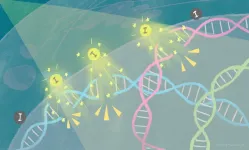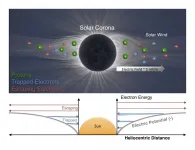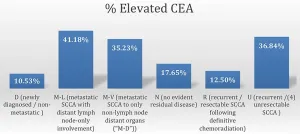Rapid evolution in waterfleas yields new conservation insights
2021-07-14
(Press-News.org) The extraordinary ability of animals to rapidly evolve in response to predators has been demonstrated via genetic sequencing of a waterflea population across nearly two decades.
In a new study, published in Nature Communications, scientists at the Universities of Birmingham in the UK, the Katholieke Universiteit Leuven in Belgium, and the Leibniz Institute for Freshwater Ecology and Inland Fisheries (IGB), Berlin, were able to identify more than 300 genes that vary in the genome of the waterflea.
These genes, which account for about about 3 per cent of all sequenced waterflea genes, underpin changes in behavioural and life history traits that improve survival when exposed to predators.
Strikingly, evolution in response to predation pressure occurs within just a few generations. It is mediated by so-called standing genetic variation - the amount of genetic diversity harboured by a given natural population. The research brings to the forefront of science the importance of standing genetic diversity to support rapid adaptation. It also highlights that reducing the genetic diversity of natural populations has important consequences for their ability to adapt to environmental change.
Lead researcher, Dr Anurag Chaturvedi, currently at the University of Birmingham's School of Biosciences and former PhD student at KU Leuven, explained: "We were able to quantify the genetic diversity of one particular Daphnia population over nearly two decades and show clearly how rapid evolution took place in response to environmental pressures. This type of research will be invaluable for understanding the potential impacts of future environmental changes on animal populations."
The waterflea, or Daphnia, is central to the food webs of lakes and ponds. Its life cycle includes a dormant stage that can last for several decades. By awakening dormant stages through resurrection biology, scientists can quantify genetic changes at several time points in the past and observe evolution as it happens in nature.
In the study, the team was able to hatch dormant eggs that span two decades and to sequence the genome of 36 resurrected Daphnia from a fish-farming pond. During the two decades, the Daphnia population experienced a transition from no predation from fish to high fish predation and back to lower levels of predation. The team was able to uniquely match changes in predation pressure on Daphnia with changes in the DNA over time. In effect, the research was able to link specific changes in the environment of Daphnia with the evolution occurring in their genomes.
The team found that the required DNA variation to kick-start an evolutionary change that spreads through an entire population did not require more than five 'founding' individual Daphnia from the regional set of Daphnia populations.
This surprising result suggests that animal species such as Daphnia have a high capacity for adaptive evolution thanks to the fact that genetic variation is maintained at the landscape level - an important lesson for conservation biology.
Lead researcher, Dr Anurag Chaturvedi explained: "Our ability to investigate populations that evolve across decades is invaluable for both fundamental and applied science discoveries".
INFORMATION:
Notes to editor:
* The University of Birmingham is ranked amongst the world's top 100 institutions. Its work brings people from across the world to Birmingham, including researchers, teachers and more than 6,500 international students from over 150 countries.
ELSE PRESS RELEASES FROM THIS DATE:
2021-07-14
Cancer cell death is triggered within three days when X-rays are shone onto tumor tissue containing iodine-carrying nanoparticles. The iodine releases electrons that break the tumor's DNA, leading to cell death. The findings, by scientists at Kyoto University's Institute for Integrated Cell-Material Sciences (iCeMS) and colleagues in Japan and the US, were published in the journal Scientific Reports.
"Exposing a metal to light leads to the release of electrons, a phenomenon called the photoelectric effect. An explanation of this phenomenon by Albert Einstein in 1905 heralded the birth of quantum physics," says iCeMS molecular biologist Fuyuhiko Tamanoi, who led the study. "Our research provides ...
2021-07-14
July 14, 2021 (Toronto) A new study from the World Health Organization's (WHO) International Agency for Research on Cancer (IARC), published in the journal Lancet Oncology, has found an association between alcohol and a substantially higher risk of several forms of cancer, including breast, colon, and oral cancers. Increased risk was evident even among light to moderate drinkers (up to two drinks a day), who represented 1 in 7 of all new cancers in 2020 and more than 100,000 cases worldwide.
In Canada, alcohol use was linked to 7,000 new cases of cancer in 2020, including 24 per cent of breast cancer cases, 20 per cent of colon cancers, 15 per cent of rectal cancers, and 13 per cent of oral and liver cancers.
"All ...
2021-07-14
As the Parker Solar Probe ventures closer to the sun, we are learning new things about our home star.
In a new study, physicists led by the University of Iowa report the first definitive measurements of the sun's electric field, and how the electric field interacts with the solar wind, the fast-flowing current of charged particles that can affect activities on Earth, from satellites to telecommunications.
The physicists calculated the distribution of electrons within the sun's electric field, a feat made possible by the fact that the Parker Solar Probe jetted within 0.1 astronomical units (AU), or a mere 9 million miles, from the sun--closer than any spacecraft has approached. From the electrons' distribution, the physicists ...
2021-07-14
For the first time, scientists have seen stony coral cells engulf dinoflagellates - single-celled, photosynthetic algae that are crucial for keeping coral alive
The researchers used a cell line called IVB5, which contains endoderm-like cells cultured from the stony coral, Acropora tenuis
Around 40% of coral cells incorporated the algae in around 30 minutes and remained healthy for one month
The research is a step towards understanding the partnership between coral and dinoflagellates and could shed light on how coral bleaching occurs
In a world-first, scientists in Japan have observed individual stony coral cells engulfing single-celled, photosynthetic algae.
The microscopic algae, known as dinoflagellates, were ...
2021-07-14
A new paper in the Journal of the National Cancer Institute, published by Oxford University Press, indicates that disruptions in health care due to the COVID 19 pandemic may increase breast cancer deaths.
In March 2020 public health measures prohibited most elective procedures, including mammography, due to hospital capacity and limited personal protective equipment. This reduced mammograms up to 80%. Breast cancer patients also experienced treatment delays and reductions in planned or expected chemotherapy treatments.
Researchers here used three independently-developed breast cancer simulation models from the National Cancer Institute's Cancer Intervention and Surveillance Modeling Network to ...
2021-07-14
Washington/Philadelphia, July 14, 2021--New research finds that high school students who attended school remotely during the COVID-19 pandemic suffered socially, emotionally, and academically compared with those who attended in person.
The study was published today in Educational Researcher (ER) by researchers Angela L. Duckworth, Tim Kautz, Amy Defnet, Emma Satlof-Bedrick, Sean Talamas, Benjamin Lira, and Laurence Steinberg. ER is a peer-reviewed journal of the American Educational Research Association.
"Many news stories have reported on individual stories of teenagers who have suffered from anxiety, depression, and other mental health challenges during the pandemic," said lead author Duckworth, ...
2021-07-14
Oncotarget published "CEA as a blood-based biomarker in anal cancer" which reported that the mean Carcinoembryonic Antigen (CEA) among subgroups by clinical status at the time of presentation to our institution was highest among those patients with metastatic Squamous cell carcinoma of the anal canal (SCCA) to visceral organs, however this finding was not statistically significant by ANOVA .
By clinical subgroup, the percentage of patients with an abnormally elevated CEA was highest in those patients with metastatic disease to lymph nodes followed by recurrent/unresectable SCCA , and metastatic SCCA ...
2021-07-14
New research published online in the International Journal of Mental Health and Addiction found that Canadians with a history of drug dependence are much less likely to have flourishing mental health and are more likely to have mental illness.
Researchers compared a nationally representative sample of 460 Canadians with a history of illicit drug dependence (excluding cannabis) to 20,305 Canadians with no history of illicit drug dependence using data drawn from Statistic Canada's Canadian Community Health Survey-Mental Health.
While 80% of those with a history of drug dependence were in remission, more than half (52.1%) were still experiencing mental illness. Further, only 37.9% were in excellent mental health, which is markedly lower than the 74.1% of ...
2021-07-14
Unlike other population-level stressful events such as natural disasters, COVID-19 has not resulted in a net increase in smoking, according to a new study from the International Tobacco Control (ITC) Project, at the University of Waterloo.
The researchers also found that although nearly half of smokers reported that COVID-19 made them think about quitting, the vast majority of smokers did not change their smoking habits during the early phase of the COVID-19 pandemic.
Led by Shannon Gravely, research assistant professor with the ITC Project, the study ...
2021-07-14
Before Millennials were over laugh-cry emojis, they were the most used emojis across the world, according to researchers at USC. The emoji was more popular than smiley faces say researchers who categorized millions of tweets across 30 countries and evaluated over 1700 emojis. Their study, "An empirical study of emoji usage on Twitter in linguistic and national contexts" was published in Online Social Networks and Media.
Mayank Kejriwal, a research assistant professor in the Department of Industrial and Systems Engineering, and a research lead at the USC Information Sciences Institute who is the lead author on the paper, says approximately 100 emojis are used most often.
The most important take away? Emojis represent ...
LAST 30 PRESS RELEASES:
[Press-News.org] Rapid evolution in waterfleas yields new conservation insights



